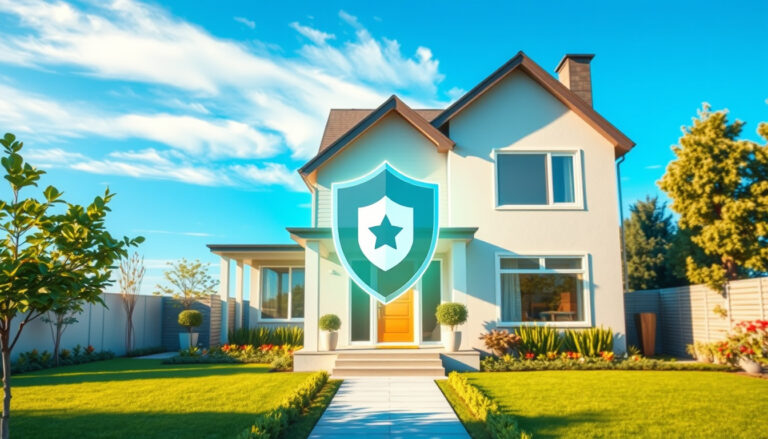In today’s world, mastering utility costs is essential for maintaining a healthy budget and ensuring financial stability.
With rising energy and water prices, learning how to effectively manage your monthly bills can provide significant savings.
This article will guide you through understanding your utility costs, assessing your current bills, implementing energy-efficient upgrades, conserving water, utilizing smart technology, and creating a budget that tracks your utility expenses.
By following these effective strategies, you can take control of your utility costs and keep more money in your pocket.


Energy Efficiency: Upgrades and Changes to Lower Consumption
In today’s world, where energy conservation is more important than ever, making energy-efficient upgrades to your home can significantly lower utility costs.
From installing Energy Star-rated appliances to enhancing insulation, there are numerous changes that homeowners can implement to reduce their energy consumption.
Simple measures such as switching to LED lighting, sealing leaks around windows and doors, and using programmable thermostats can lead to substantial savings on monthly utility bills.
Additionally, considering renewable energy sources like solar panels not only contributes to a reduced carbon footprint but also offers long-term financial benefits by minimizing reliance on traditional energy grids.
By investing in these upgrades, homeowners can not only enjoy a more comfortable living space but also experience a remarkable decrease in their utility costs over time.
Water Conservation: Simple Tips to Reduce Your Water Bill
Water conservation is not only beneficial for the environment but also plays a crucial role in reducing utility costs for homeowners.
Simple changes can lead to significant savings on your water bill.
Start by checking for leaks in faucets and toilets, as even a small drip can waste gallons of water a day.
Install low-flow showerheads and faucets which can drastically cut down water usage without sacrificing pressure.
Consider collecting rainwater in barrels for garden use, and make it a habit to turn off the tap while brushing your teeth.
Optimize your landscape by using drought-resistant plants that require less water, and adjust your lawn cutting schedule to allow grass to grow taller, which helps retain moisture.
Finally, educate all household members about the importance of conserving water, as collective efforts can lead to substantial reductions in utility costs.
By implementing these simple tips, you can enjoy a lighter water bill while also contributing to sustainable water use.

Utilizing Smart Technology: Tools to Help Manage Utility Usage
In today’s modern homes, effective management of utility costs is increasingly essential for homeowners and renters alike.
Utilizing smart technology offers a myriad of tools designed to monitor and reduce these expenses significantly.
Smart thermostats, for instance, allow you to control your heating and cooling systems remotely, optimizing energy consumption based on your daily habits.
Moreover, smart lighting systems enable you to manage lights efficiently, ensuring they are only on when needed, thereby cutting down on electricity costs.
Additionally, smart plugs and appliances can track energy usage, giving you real-time insights into your consumption patterns, helping to identify areas where you can save.
By adopting these innovative solutions, not only can you effectively manage your utility costs, but you can also contribute to a more sustainable environment.
Creating a Budget: Planning and Tracking Your Utility Expenses
Creating a budget for utility costs is essential for anyone looking to manage their household expenses effectively.
When planning your utility budget, start by identifying the types of utilities you need to account for, such as electricity, water, gas, internet, and trash services.
Track your historical utility expenses over a few months to understand your typical usage patterns and peaks—this will give you a clearer picture of what to expect in the upcoming months.
Utilize budgeting tools or spreadsheets to categorize and monitor these expenses; this way, you’ll be better equipped to adjust your budget if utility costs fluctuate.
Additionally, consider exploring ways to reduce these costs, such as energy-saving appliances or conservation habits.
By planning and tracking your utility costs, you not only ensure financial stability but also create an opportunity for savings that could be used for other vital areas of your budget.
Frequently Asked Questions
What are some common factors that affect my utility costs?
Utility costs can be affected by several factors including the size of your home, the number of occupants, local utility rates, and your consumption habits.
Seasonal changes can also lead to fluctuations, particularly in heating and cooling costs.
How can I effectively assess my current utility bills?
Start by reviewing your bills for the past few months to identify patterns and peak usage times.
Look for any changes in rates and compare your bills to prior years to spot any significant increases.
This will help you identify areas where you can improve efficiency.
What are some simple energy-efficient upgrades I can make at home?
Consider upgrading to LED lighting, using energy-efficient appliances, sealing drafts around windows and doors, and improving insulation.
Even small changes, like adjusting your thermostat or adding a programmable timer, can lead to significant savings.
How can I conserve water effectively at home?
Simple tips include fixing leaks promptly, using water-saving fixtures (like low-flow showerheads), and changing your landscaping to include drought-resistant plants.
Being mindful of water usage during daily activities, such as shorter showers and using a broom instead of a hose to clean driveways, can also help.
What smart technologies are available to help manage my utility costs?
Smart thermostats, energy monitors, and water leak detectors are some of the technologies that can help you monitor and manage your utility usage more effectively.
These devices can provide insights into your consumption and allow for remote control of home systems, potentially leading to significant savings.





